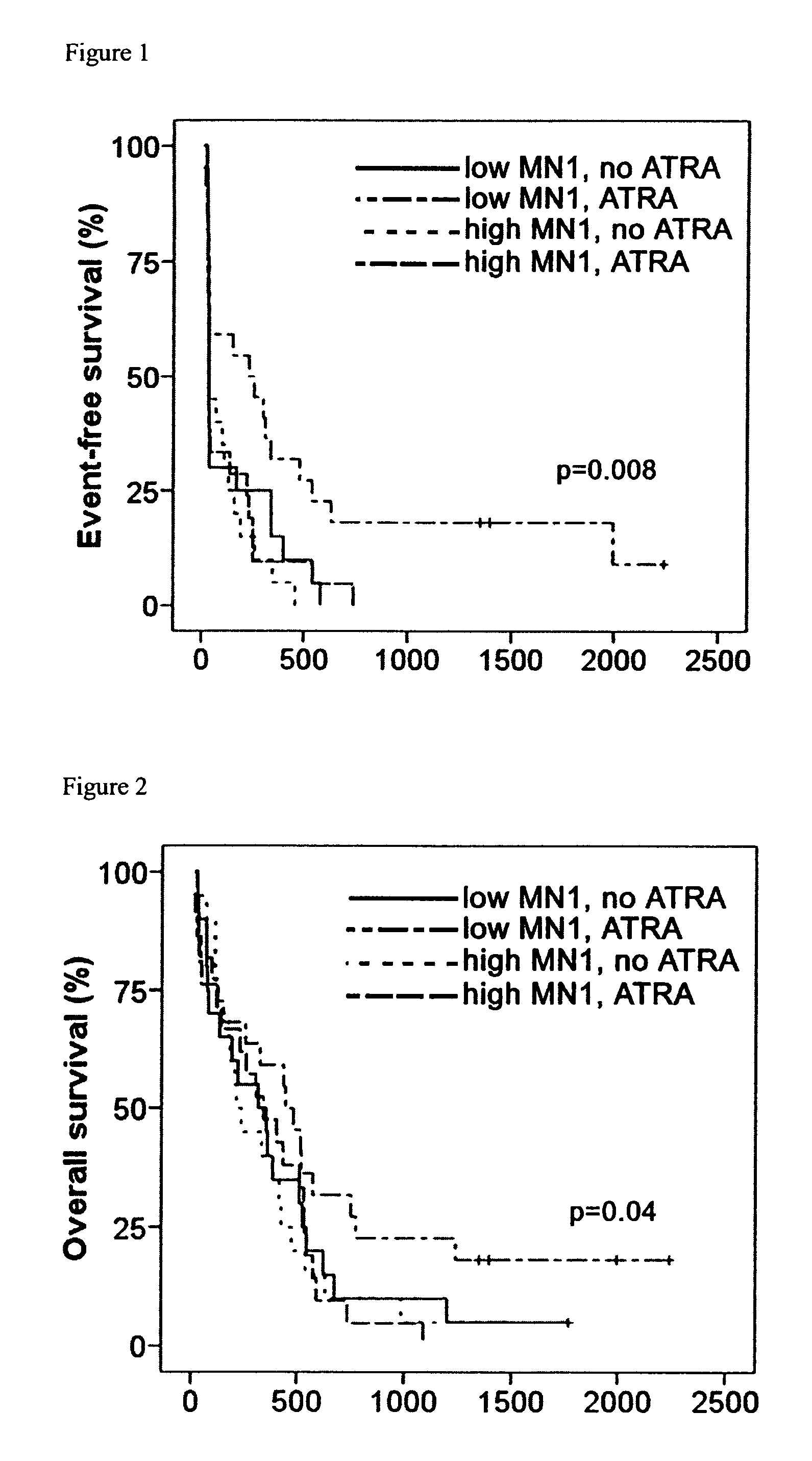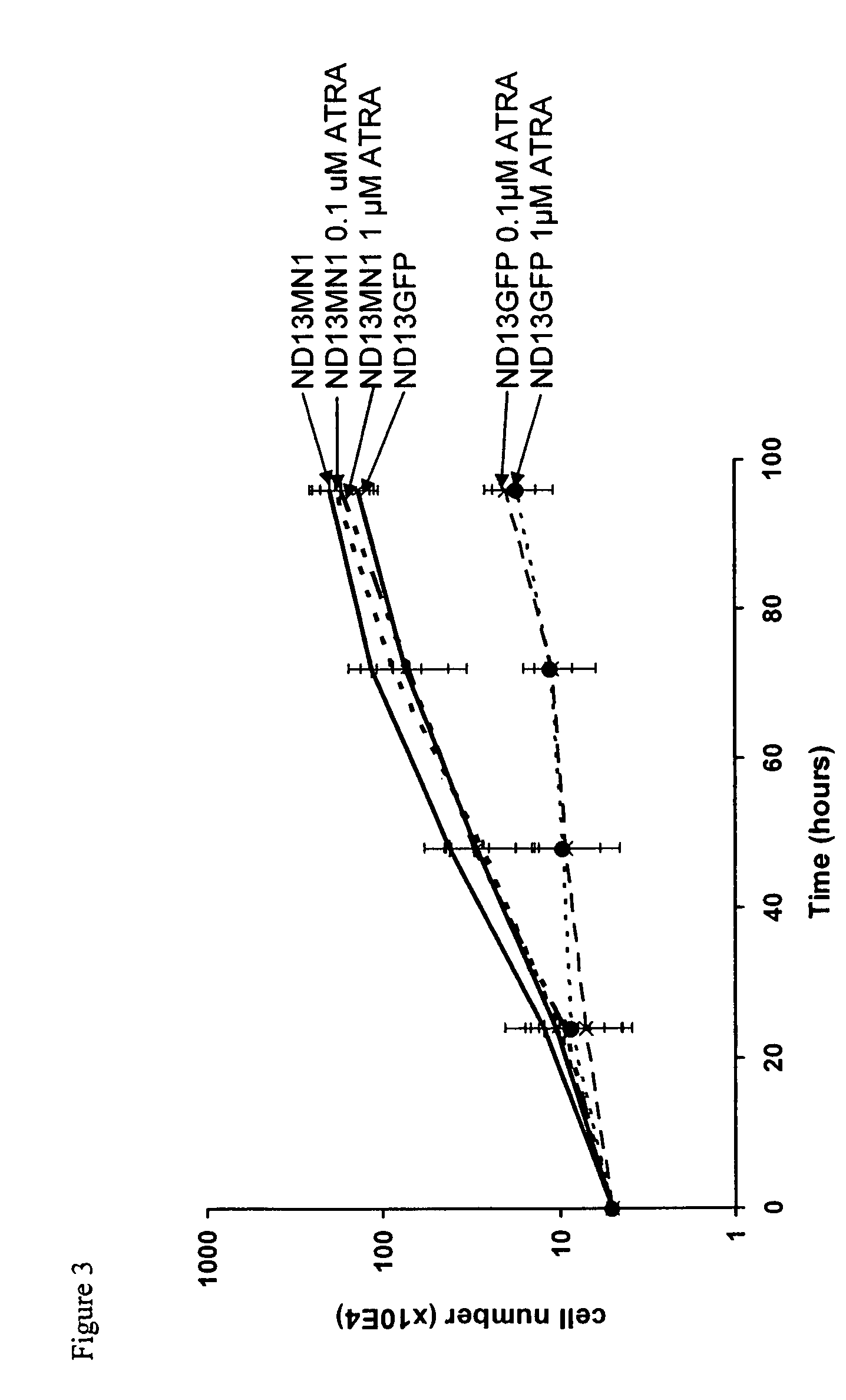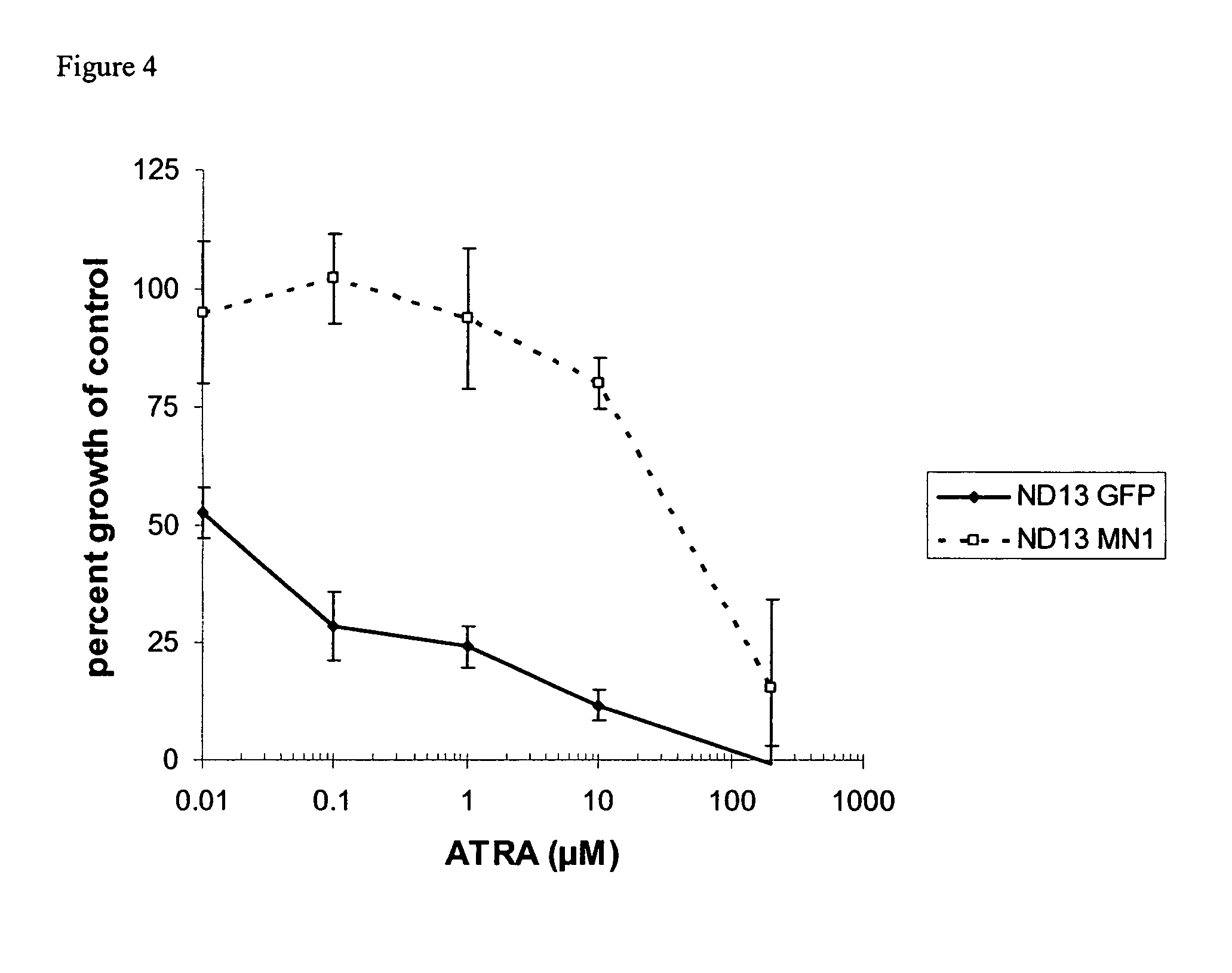Diagnostic assay for the specific treatment of acute myeloid leukemia
a specific treatment and assay technology, applied in the field of diagnostic assay for acute myeloid leukemia, can solve the problems of serious side effects and inability to significantly improve the health status of patients, and achieve the effect of avoiding unnecessary burden and side effects of all-trans retinoic acid treatment and good reason for success
- Summary
- Abstract
- Description
- Claims
- Application Information
AI Technical Summary
Benefits of technology
Problems solved by technology
Method used
Image
Examples
example 1
Diagnostic Assay for the Determination of the Level of MN1
[0043]According to a preferred embodiment of the invention, the level of MN1 is determined as the concentration of transcripts encoding MN1 using RT-PCR. For the isolation of total RNA, preferably of mRNA only, blood cells or bone marrow cells of patients diagnosed with acute myeloid leukemia were extracted as is known in the art.
[0044]For RNA extraction, mononuclear cells are isolated from blood or bone marrow cells by Ficoll separation. These cells may be stored frozen, but preferably used fresh for RNA extraction. Total RNA is extracted using TRIZOL reagent (Invitrogen) and, optionally, subsequently purified by a Qiagen RNeasy column (Qiagen). The RNA concentration is determined using standard methods.
[0045]As generally known for quantitative PCR, suitable annealing temperatures, cDNA concentrations, buffers can be found by initial test reactions. The threshold number of amplification cycles were preferably determined for ...
example 2
Treatment of Acute Myeloid Leukemia Patients with All-Trans Retinoic Acid
[0050]The efficacy of the treatment of acute myeloid leukemia patients with all-trans retinoic acid in dependence from the level of MN1 below a critical level is demonstrated for a group of patients from which the M3 subtype was excluded. For exclusion of the M3 subtype of acute myeloid leukemia, standard karyotype analysis from patient peripheral blood or from bone marrow aspirates was performed on all patients as is known in the art. Karyotypes that were excluded were translocations t(15;17)(q22;q21), t(11;17)(q23;q21), t(5;17)(q35;q21), t(11;17)(q13;q21), or t(17;17)(q21;q21).
[0051]Patients were above the age of 60. Initially, all 83 patients received treatment according to the AML HD98-B protocol. The induction therapy consisted of ICE (idarubicin 12 mg / m2 i.v. days 1 and 3, cytarabine 100 mg / m2 cont. i.v. days 1-5, etoposide 100 mg i.v. days 1 and 3) or the same chemotherapy plus ATRA (A-ICE) started after...
example 3
Expression of MN1 Confers Resistance to all-Trans Retinoic Acid in Cell Culture
[0058]For a demonstration of the effect of MN1 to confer the resistance against all-trans retinoic acid onto cells and to strongly induce cell proliferation, the mouse cell line ND13 was transduced with a control vector encoding GFP and with an expression vector encoding MN1.
[0059]The expression vector encoding GFP contained to the GFP gene under control of the spleen focus-forming virus promoter, integrated into the vector pSF91 (described in detail in Hildinger et al., J. Virol. 73, 4083-4089 (1999)). The MN1 expression vector contained the human MN1 gene under the control of the same promoter in the same vector backbone.
[0060]Proliferation results of cell cultures of transduced ND13 cells without ATRA (ctl) and with 0.1 μM all-trans retinoic acid (ATRA) and 1 μM ATRA, respectively, are shown in FIG. 3 for both GFP and MN1 expressing cells.
[0061]The results depicted in FIG. 3 clearly show that expressio...
PUM
| Property | Measurement | Unit |
|---|---|---|
| concentration | aaaaa | aaaaa |
| gel electrophoresis | aaaaa | aaaaa |
| nucleic acid | aaaaa | aaaaa |
Abstract
Description
Claims
Application Information
 Login to View More
Login to View More - R&D
- Intellectual Property
- Life Sciences
- Materials
- Tech Scout
- Unparalleled Data Quality
- Higher Quality Content
- 60% Fewer Hallucinations
Browse by: Latest US Patents, China's latest patents, Technical Efficacy Thesaurus, Application Domain, Technology Topic, Popular Technical Reports.
© 2025 PatSnap. All rights reserved.Legal|Privacy policy|Modern Slavery Act Transparency Statement|Sitemap|About US| Contact US: help@patsnap.com



